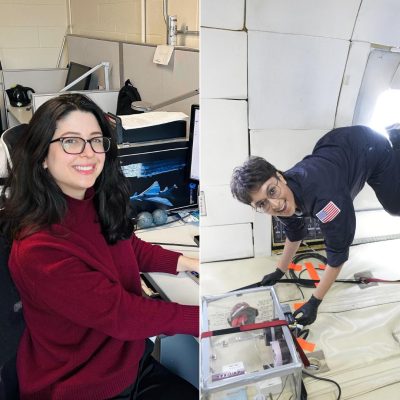
MIT AeroAstro team showcases field-reconfigurable robots at Amazon MARS
The Walking Oligomeric Robotic Mobility System (WORMS) architecture, developed over the last 2.5 years by AeroAstro’s Space Resources Workshop, Human Systems Laboratory, and Engineering Systems Laboratory, represents a step forward in the realm of lunar robotics. Under the leadership of Dr. George Lordos, the project was initiated to address NASA’s 2022 BIG Idea Challenge, aiming to fulfill the diverse requirements of lunar robotics in support of human exploration while also optimizing supportability and maintenance logistics over the long term. The project has been recognized with numerous awards, including the Best Technical Paper at the 2022 NASA BIG Idea Challenge, and the M. Charles Fogg Best Conference Paper Award and the Best Paper in Track 13: Systems Engineering, Management and Cost at the 2023 IEEE Aerospace Conference. This March, the WORMS team demonstrated their prototype at the 2024 Amazon MARS conference.
WORMS is noted for its unique design, integrating a collection of identical, articulating “Worm” robots with various accessories and species modules. This design enables the assembly of varied walking robots capable of transporting payloads from a few kilograms to several tons. The architecture of WORMS is composed of individual Worm robots, each a self-contained module with power, communication, and control systems, facilitating up to 3 degrees of freedom. This modular approach enables swift, adaptable assembly of multi-Worm robots tailored for specific lunar missions, ranging from exploration to logistical support.
In 2022, a significant milestone was the demonstration of a full-scale hexapod prototype at the NASA BIG Idea Challenge in Lucerne Valley, CA. This prototype, which weighs 110kg, demonstrated the system’s capacity to coordinate its six independent Worm robots so as to walk and bear payloads significantly heavier than itself on the lunar surface.
The 2024 Amazon MARS conference featured a different demonstration of WORMS, intended to highlight their field-reconfigurability. A quadruped robot consisting of a body, four Worm robots and four shoes designed to walk on porous sand performed a walking gait inspired by turtles for its energy efficiency. This design allows the robot’s body to rest on the ground between steps, reducing energy consumption. The reconfigurability demonstration was achieved by swapping a robotic leg of the turtle-bot for a fixed digger arm and then continuing to operate both systems simultaneously, showcasing how both components adapted their behavior based on their connections.
The architecture promises to enhance the availability of robots for lunar science, exploration and logistics missions, simplify in-field repairs, and streamline the manufacturing and logistics of robots for lunar exploration tasks. In summary, WORMS stands as a testament to the innovative system architecture capabilities of MIT’s AeroAstro department, offering a versatile and adaptable solution for the future of lunar and potentially Martian exploration. With its modular design and successful demonstrations, WORMS is poised to support a variety of science, exploration, and logistical tasks on the Moon and beyond.
The project has benefited from the collective efforts of a dedicated team, including Jacob Rodriguez (deputy team lead), Juan Alvarez, Alan Cao, Ben Carlson, Suchitha Channapatna, Chloe Gentgen, Trevor Johst, AZ Krebs, and Marc Vidal. The team was led by the inventor of the WORMS architecture Dr. George Lordos, and co-advised by Prof. Jeffrey Hoffman and Prof. Olivier de Weck.
Learn more about the WORMS project via MIT News.

